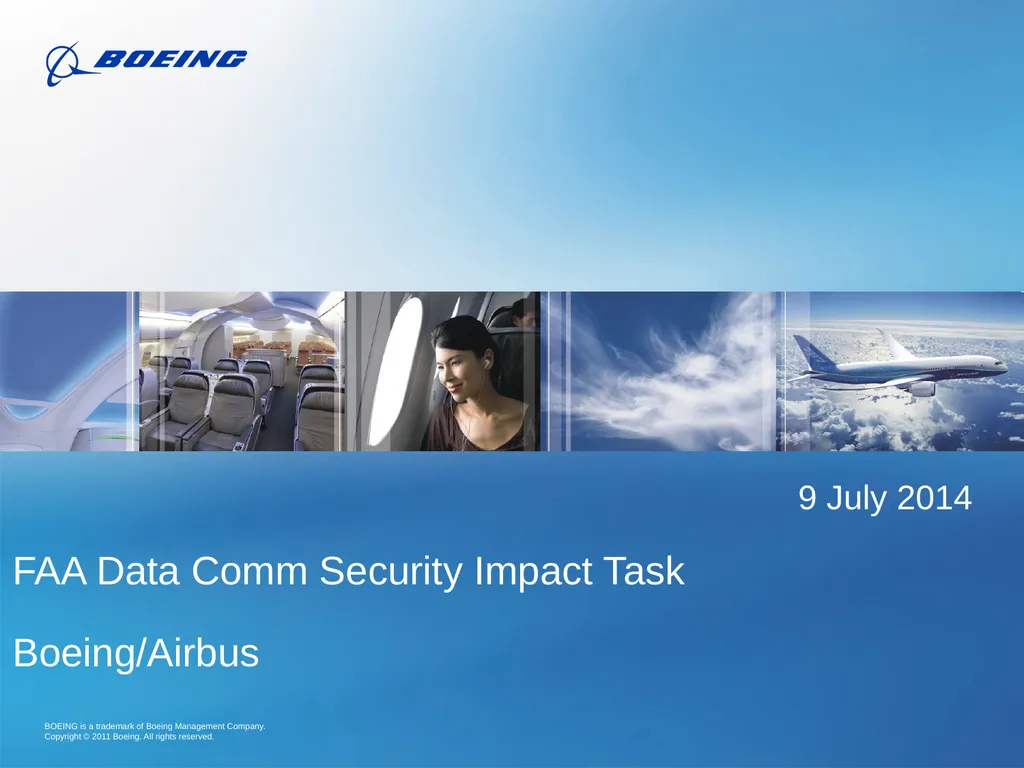
9 July 2014 FAA Data Comm Security Impact Task
Author: natalia-silvester | Published: 2025-08-06
Description: 9 July 2014 FAA Data Comm Security Impact Task BoeingAirbus Introduction, study areas, mitigations BoeingAirbus Tasking Define data security strategy on ATS data link air-ground segment only Why the need, including briefs from the FAA on
Download Presentation
Download the PPT/PDF: Download
Transcript:
Loading transcript…